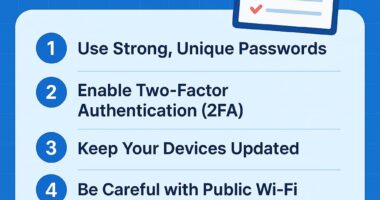In today’s fast-paced, hyperconnected world, digital tools have become essential for work, communication, and entertainment. While technology offers countless benefits, it also comes with risks to mental health, including stress, fatigue, and burnout. Learning how to maintain mental wellness in the digital age is crucial for sustaining balance and productivity.
Understanding Digital Burnout
Burnout occurs when prolonged stress leads to physical, emotional, and mental exhaustion. In the digital age, burnout often arises from constant notifications, endless emails, and the pressure to always be available. Over time, this can result in anxiety, irritability, decreased concentration, and even physical symptoms like headaches or insomnia.
Signs You May Be Experiencing Digital Burnout
-
Difficulty focusing on tasks
-
Constant feelings of tiredness despite adequate rest
-
Loss of motivation or enthusiasm for work
-
Irritability or mood swings
-
Trouble disconnecting from devices
Recognizing these signs early is the first step to regaining control and protecting your mental wellness.
Practical Tips to Maintain Mental Wellness
1. Set Clear Digital Boundaries
Create designated times when you are offline. This could include no-screen mornings, device-free meals, or shutting down electronics an hour before bed. Boundaries allow your brain to rest and reset.
2. Practice Digital Minimalism
Reduce digital clutter by unsubscribing from unnecessary emails, limiting social media use, and keeping only essential apps. Simplifying your digital environment helps minimize stress triggers.
3. Take Regular Breaks
Follow the 20-20-20 rule: every 20 minutes, look at something 20 feet away for at least 20 seconds. Short breaks from screens prevent eye strain and refresh your mind.
4. Prioritize Sleep and Rest
Blue light from screens interferes with your natural sleep cycle. Use blue light filters, or better yet, disconnect from devices before bedtime. Quality sleep is one of the best defenses against burnout.
5. Engage in Offline Activities
Hobbies such as reading, painting, gardening, or exercising help balance digital exposure. These activities recharge your mind and improve overall well-being.
6. Practice Mindfulness and Relaxation
Techniques such as meditation, deep breathing, and journaling help manage stress levels. Apps designed for mindfulness can be beneficial, but remember to step away from screens when possible.
Creating a Sustainable Digital Lifestyle
Maintaining mental wellness in the digital age isn’t about rejecting technology—it’s about using it wisely. By creating healthier digital habits, you can improve focus, reduce stress, and foster resilience. Remember that self-care, rest, and personal connections outside the digital space are equally important for long-term well-being.
Final Thoughts
The digital age will only continue to evolve, bringing new opportunities and challenges. By practicing intentional use of technology, setting boundaries, and prioritizing mental health, you can thrive without falling victim to burnout. Mental wellness is not a luxury—it’s a necessity for living a balanced, fulfilling life.









